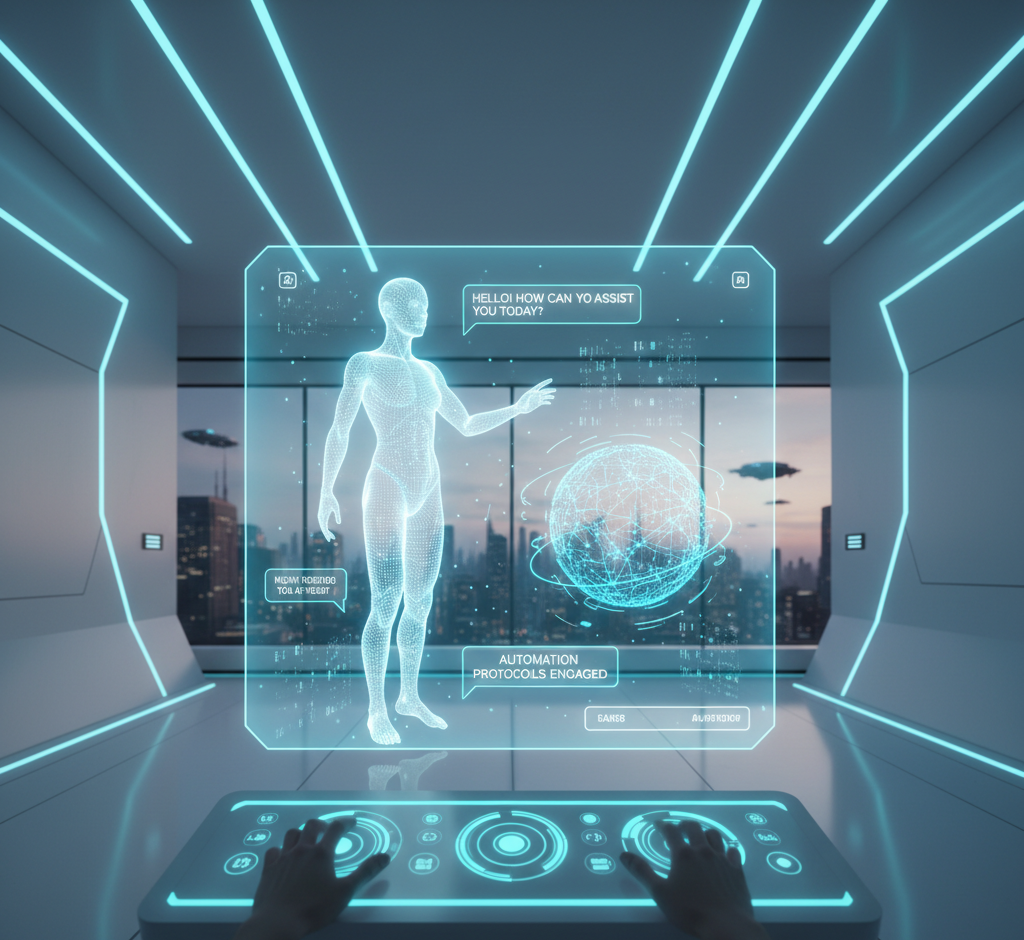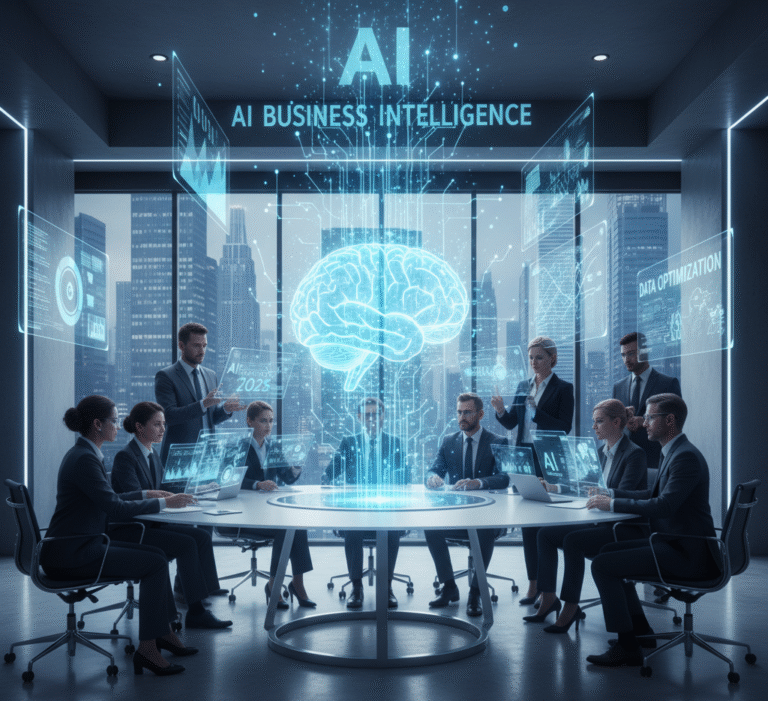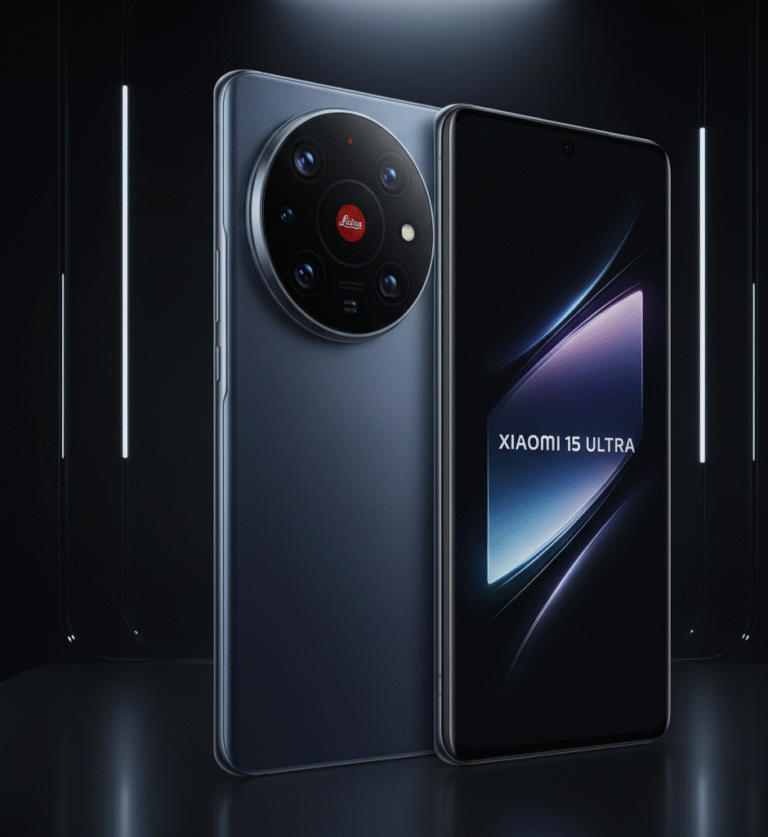
Futuristic AI Chatbot revolutionizing digital communication in 2025
🌍 Introduction: The Era of AI Chatbots 2025
In 2025, AI chatbots have evolved far beyond simple question-answer bots. Today, they understand context, emotion, voice, and even visual cues — revolutionizing how humans and machines communicate.
From hyper-personalized assistants that predict your needs to autonomous AI agents that execute tasks independently, chatbots have become the foundation of next-generation digital interaction.
Let’s explore how AI chatbots in 2025 are transforming industries, enhancing customer experience, and redefining automation.
🤖 1. What Are AI Chatbots?
AI chatbots are intelligent conversational systems powered by machine learning and natural language processing (NLP). They can understand text, voice, and images — and respond with human-like precision.
Unlike traditional bots that follow predefined rules, modern AI chatbots use deep learning to interpret context, emotions, and intent.
Key Functions of AI Chatbots:
-
Answering complex questions
-
Providing personalized product recommendations
-
Handling customer support 24/7
-
Automating business workflows
-
Integrating with CRM and analytics tools
🧩 2. Conversational AI: The Brain Behind Chatbots
Conversational AI is the technology that enables chatbots to interact naturally. It uses NLP, sentiment analysis, and reinforcement learning to create smooth, human-like dialogues.
In 2025, Generative AI (like GPT-based models) is powering smarter chatbots capable of contextual reasoning, adaptive tone, and self-learning from past interactions.
Benefits of Conversational AI:
-
Natural human-like responses
-
Context-aware conversations
-
Reduced response time
-
Enhanced user satisfaction
Example:
A banking chatbot can now understand, “Can you help me fix my credit card issue from last month?” without needing specific keywords — that’s the power of contextual AI.
🎙️ 3. Voice-Enabled Chatbots: The Rise of Speech AI
With smart speakers, virtual assistants, and voice commerce, voice-enabled chatbots are a major trend in 2025.
Voice chatbots allow users to interact using natural speech — no typing required. Using ASR (Automatic Speech Recognition) and TTS (Text-to-Speech), these bots can converse fluently.
Popular Voice-Enabled Chatbots:
-
Amazon Alexa Business Bot
-
Google Assistant for Enterprise
-
Microsoft Copilot Voice
-
ChatGPT Voice Agents
Use Cases:
-
Hands-free banking support
-
Smart home control
-
Healthcare teleconsultation
-
Retail voice checkout
🧠 4. Multimodal Chatbots: Beyond Text and Voice
Multimodal chatbots process text, voice, images, and gestures — offering a complete interactive experience.
Example: You can send a photo of a damaged car to an insurance chatbot, and it can analyze the image and initiate a claim automatically.
Key Technologies Used:
-
Computer Vision
-
NLP + NLU (Natural Language Understanding)
-
Reinforcement Learning
-
Edge AI
Industries Using Multimodal Chatbots:
-
Healthcare diagnostics
-
E-commerce visual searches
-
Smart education platforms
-
Travel and hospitality
🧭 5. Autonomous AI Agents: The Next Frontier – AI Chatbots 2025
In 2025, chatbots are evolving into autonomous AI agents — systems that don’t just talk but think, decide, and act.
These agents can:
-
Schedule meetings
-
Book flights
-
Manage customer complaints
-
Handle end-to-end workflows
They use AI reasoning + automation tools (like RPA) to operate independently.
Example:
An autonomous agent in HR can onboard a new employee — from document collection to account setup — without human intervention.
💬 6. Hyper-Personalized Chatbots – AI Chatbots 2025
Personalization is at the heart of AI chatbot evolution.
Hyper-personalized chatbots analyze data such as:
-
User behavior
-
Search history
-
Purchase intent
-
Mood (via sentiment analysis)
This allows them to deliver tailored responses and product recommendations.
Result: 10x higher engagement and conversion rates.
💡 7. Chatbot Sentiment Analysis: Understanding Human Emotions – AI Chatbots 2025
Sentiment analysis enables chatbots to detect user emotions (anger, frustration, joy) and respond empathetically.
For example:
-
“I’m really upset!” → triggers an apology and escalation to human support.
-
“That was awesome!” → triggers a thank-you and loyalty offer.
This emotional intelligence builds trust and long-term relationships.
🌐 8. Multilingual Chatbots: Breaking Language Barriers – AI Chatbots 2025
Global brands in 2025 use multilingual AI chatbots that support over 100+ languages.
Powered by real-time translation models, these bots ensure consistent customer experiences across geographies.
Top Use Cases:
-
Global e-commerce customer support
-
Multilingual HR assistance
-
Travel and hospitality bots
Example: A single chatbot can converse in English, Hindi, Spanish, and Arabic seamlessly.
🧬 9. On-Device Chatbots: Privacy-First AI – AI Chatbots 2025
With rising concerns about data security, on-device AI chatbots process data locally — without sending it to the cloud.
Advantages:
-
Faster response time
-
Enhanced privacy and compliance (GDPR-friendly)
-
Offline functionality
These are especially used in healthcare, finance, and government sectors.
🧠 10. Generative AI Chatbots: Creative Intelligence – AI Chatbots 2025
Generative AI chatbots (like ChatGPT, Claude, and Gemini) create dynamic and original content — from scripts and blogs to personalized recommendations.
Use Cases:
-
Content creation
-
Education and tutoring
-
Personalized marketing messages
Example:
A travel chatbot can generate an entire itinerary for your next vacation in seconds.
🧰 11. Future Chatbot Trends for 2025 and Beyond -AI Chatbots 2025
Upcoming Chatbot Innovations:
-
Emotionally intelligent AI
-
AR/VR integrated chatbots
-
Blockchain-based authentication
-
Predictive intent modeling
-
Chatbots for mental health therapy
Stat Insight:
By 2026, over 80% of customer interactions are expected to be handled by AI-driven chatbots.
💼 12. Industries Revolutionized by Chatbots – AI Chatbots 2025
| Industry | Application | Example |
|---|---|---|
| Healthcare | Virtual doctors, remote monitoring | Ada Health, Babylon AI |
| Finance | Fraud alerts, digital KYC | HDFC EVA, Cleo AI |
| E-commerce | Order tracking, recommendations | Shopify Kit |
| Education | Smart tutoring, interactive lessons | Duolingo AI Tutor |
| Travel | Booking & itinerary planning | Skyscanner Bot |
⚙️ 13. Key Benefits of AI Chatbots – AI Chatbots 2025
-
24/7 availability
-
Reduced operational costs
-
Scalable customer support
-
Data-driven insights
-
Enhanced customer satisfaction
Smart Health Wearable Devices – The Rise of Smart Health Wearables
In 2025, health technology is no longer just about gyms and fitness apps. With advancements in AI, IoT, and wearable sensors, monitoring vital signs, fitness, and mental health has become accessible, accurate, and continuous.
https://techblogs360.com/discover-the-latest-smart-health-wearable-devices/
🔐 14. Challenges in Chatbot Implementation – AI Chatbots 2025
-
Data privacy risks
-
AI bias and ethical issues
-
Integration with legacy systems
-
Maintaining emotional accuracy
🚀 15. The Future of AI Chatbots – AI Chatbots 2025
The AI chatbot ecosystem is evolving toward autonomy, empathy, and personalization.
In the near future:
-
Chatbots will act as digital companions.
-
They’ll predict needs before you even ask.
-
And they’ll operate across platforms seamlessly.
The future of AI chatbots = humanized intelligence.
🧾 Conclusion: A New Era of Human-AI Connection – AI Chatbots 2025
By 2025, AI chatbots aren’t just tools — they’re partners in our digital lives.
They handle support, automate business, and even improve emotional well-being.
From voice to vision, from automation to emotion — the world of conversational AI is transforming the global communication landscape forever.



